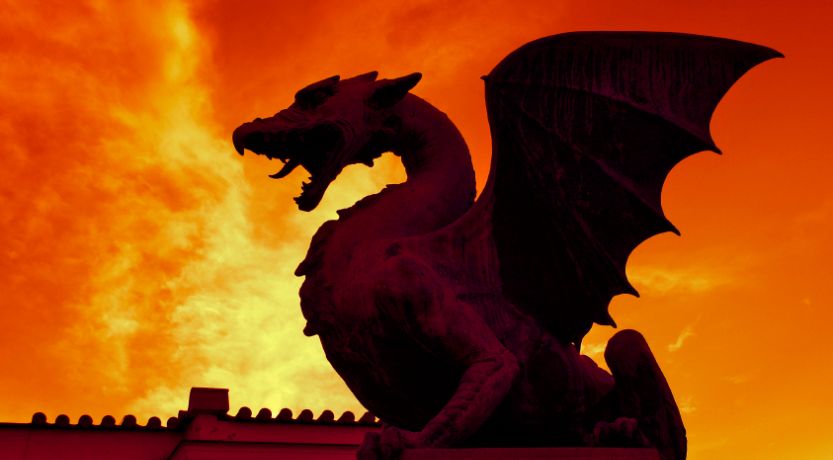Many people describe the final battle at the end of the world as the battle of Armageddon. But what is Armageddon and is that really what the Bible teaches?

What does Armageddon mean in the Bible?
The term Armageddon refers to a geographical location about 80 miles north of Jerusalem by road called in Hebrew Har Megiddo. Historically, this location was the site of many ancient battles. The book of Revelation refers to this location as a staging area where armies will gather before descending on Jerusalem to battle the returning Jesus Christ.
For centuries, the final battle at the end of the world between the forces of good and evil has been called by many the battle of Armageddon.
In popular culture, the word Armageddon has taken on the meaning “a final and conclusive battle between the forces of good and evil” and “a usually vast decisive conflict or confrontation” (Merriam-Webster.com).
Armageddon in the Bible
Yet the Bible doesn’t use the phrase battle of Armageddon. In Revelation 16:16, the only place in the Bible where the word Armageddon is found, we see a different, though related, explanation: “And they gathered them together to the place called in Hebrew, Armageddon.”
“They,” according to verses 13-14, are the three unclean “spirits of demons, performing signs,” who go out to the leaders of the earth “to gather them to the battle of that great day of God Almighty.”
Notice that the name of the battle is not called “Armageddon.” It is called the battle of “that great day of God Almighty.” Armageddon will be the gathering place for the armies.
What does Armageddon mean?
The Hebrew word for Armageddon is actually “Har Megiddo,” which means hill or mountain of Megiddo. It also referred to the plain and valley of Esdraelon.
Where is Megiddo?
Megiddo today is an archaeological site about 80 miles (130 kilometers) north of Jerusalem by road.
According to the Encyclopaedia Britannica, Megiddo “lies about 18 miles (29 km) southeast of Haifa in northern Israel. Megiddo’s strategic location at the crossing of two military and trade routes gave the city an importance far beyond its size. It controlled a commonly used pass on the trading route between Egypt and Mesopotamia, and it also stood along the northwest-southeast route that connected the Phoenician cities with Jerusalem and the Jordan River valley.”
Many historical battles could be called the battle of Armageddon
Because of its strategic location, the area of Armageddon has been the site of many battles in history.
For example, the Bible mentions it was in this area where Pharaoh Necho of Egypt, on his way to aid the king of Assyria, was attacked by King Josiah of Judah, who then was defeated by the Egyptians at Megiddo (2 Kings 23:29-30).
And, according to the Encyclopaedia Britannica, “In modern times Megiddo gave its name to an important battle won by the British general Edmund Allenby, who commanded the British forces in Palestine during the latter part of World War I.”
A historical marker at the site of Megiddo says, “The city of Megiddo played a prominent role in the history of the ancient Near East. Strategically located at the mouth of the Nahal ‘Iron Pass,’ Megiddo controlled access to the road that linked Egypt with Mesopotamia and Anatolia—the most important trade and military route of that time. Megiddo is the only site in the Land of Israel mentioned in the records of all Near Eastern ancient powers and was one of the most fought-over cities of the region.”
Armageddon will be the staging area for the end-time battle
Even though this valley has seen many major battles in the past, Har Megiddo (Armageddon) is only going to be the staging area for the armies in the future. Those armies, once gathered, will travel south to Jerusalem. ...
Even though this valley has seen many major battles in the past, Har Megiddo (Armageddon) is prophesied to be the staging area for the armies in the future. Those armies, once gathered, will travel south to Jerusalem, and the actual battle of the “great day of God Almighty” will take place in the Valley of Jehoshaphat (Kidron Valley) just to the east of the Old City of Jerusalem.
Notice Joel 3:2: “I will also gather all nations, and bring them down to the Valley of Jehoshaphat; and I will enter into judgment with them there on account of My people, My heritage Israel, whom they have scattered among the nations; they have also divided up My land.”
Also notice verses 12-14: “‘Let the nations be wakened, and come up to the Valley of Jehoshaphat; for there I will sit to judge all the surrounding nations. Put in the sickle, for the harvest is ripe. Come, go down; for the winepress is full, the vats overflow—for their wickedness is great.’ Multitudes, multitudes in the valley of decision! For the day of the LORD is near in the valley of decision.”
The same phraseology of Joel 3 is used in Revelation 19:11-20. These verses describe the battle of the great day of God Almighty, in which Jesus Christ returns to the earth and will defeat the armies sent against Him.
Zechariah 14:1-4 also prophesies of this time:
“Behold, the day of the LORD is coming, and your spoil will be divided in your midst. For I will gather all the nations to battle against Jerusalem; the city shall be taken, the houses rifled, and the women ravished. Half of the city shall go into captivity, but the remnant of the people shall not be cut off from the city.
“Then the LORD will go forth and fight against those nations, as He fights in the day of battle. And in that day His feet will stand on the Mount of Olives, which faces Jerusalem on the east. And the Mount of Olives shall be split in two, from east to west, making a very large valley; half of the mountain shall move toward the north and half of it toward the south.”
Armageddon’s place in end-time prophecy
So, in summary, the Bible doesn’t talk about a battle of Armageddon. Armageddon is the place where the armies of the earth will be gathered just before the conclusive end-time battle. Those armies will then march toward Jerusalem to battle against Jesus Christ in the battle of the great day of God Almighty.
In Revelation 19, the set up of this epic battle fills most of the chapter. The battle ends with this summary:
“And I saw the beast, the kings of the earth, and their armies, gathered together to make war against Him who sat on the horse [Jesus Christ, described in verses 11-16] and against His army.
“Then the beast was captured, and with him the false prophet who worked signs in his presence, by which he deceived those who received the mark of the beast and those who worshiped his image. These two were cast alive into the lake of fire burning with brimstone.
“And the rest were killed with the sword which proceeded from the mouth of Him who sat on the horse. And all the birds were filled with their flesh” (Revelation 19:19-21).
Jesus Christ will defeat all of those armies. Christ will then establish the Kingdom of God on the earth, which will rule forever.
For assistance in fulfilling Christ’s command to “watch therefore, and pray always that you may be counted worthy to escape all these things that will come to pass, and to stand before the Son of Man” (Luke 21:36), subscribe to the Life, Hope & Truth Weekly Newsletter, which contains our World Watch Weekly section. It’s free and comes directly to your email inbox each week.





